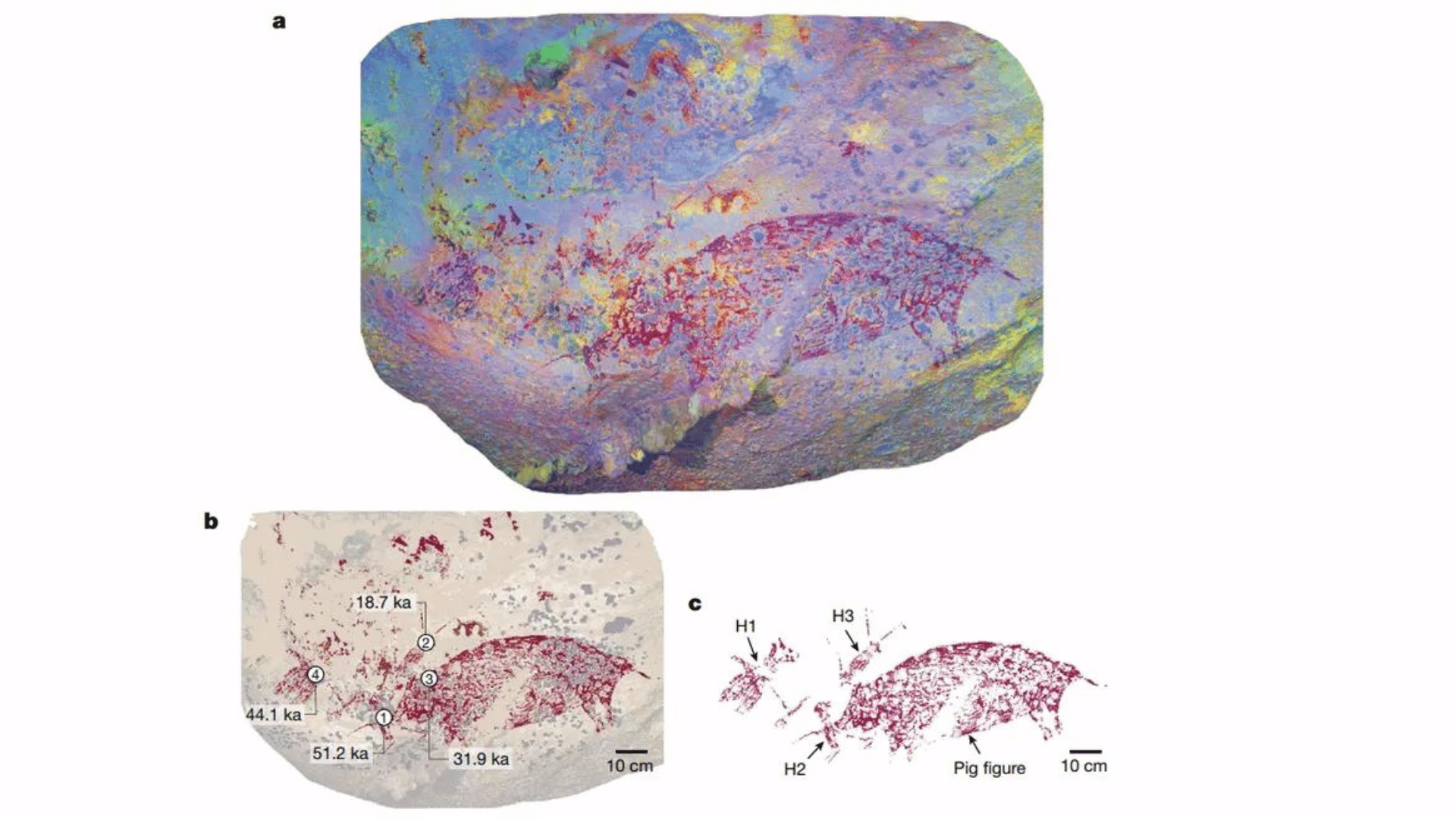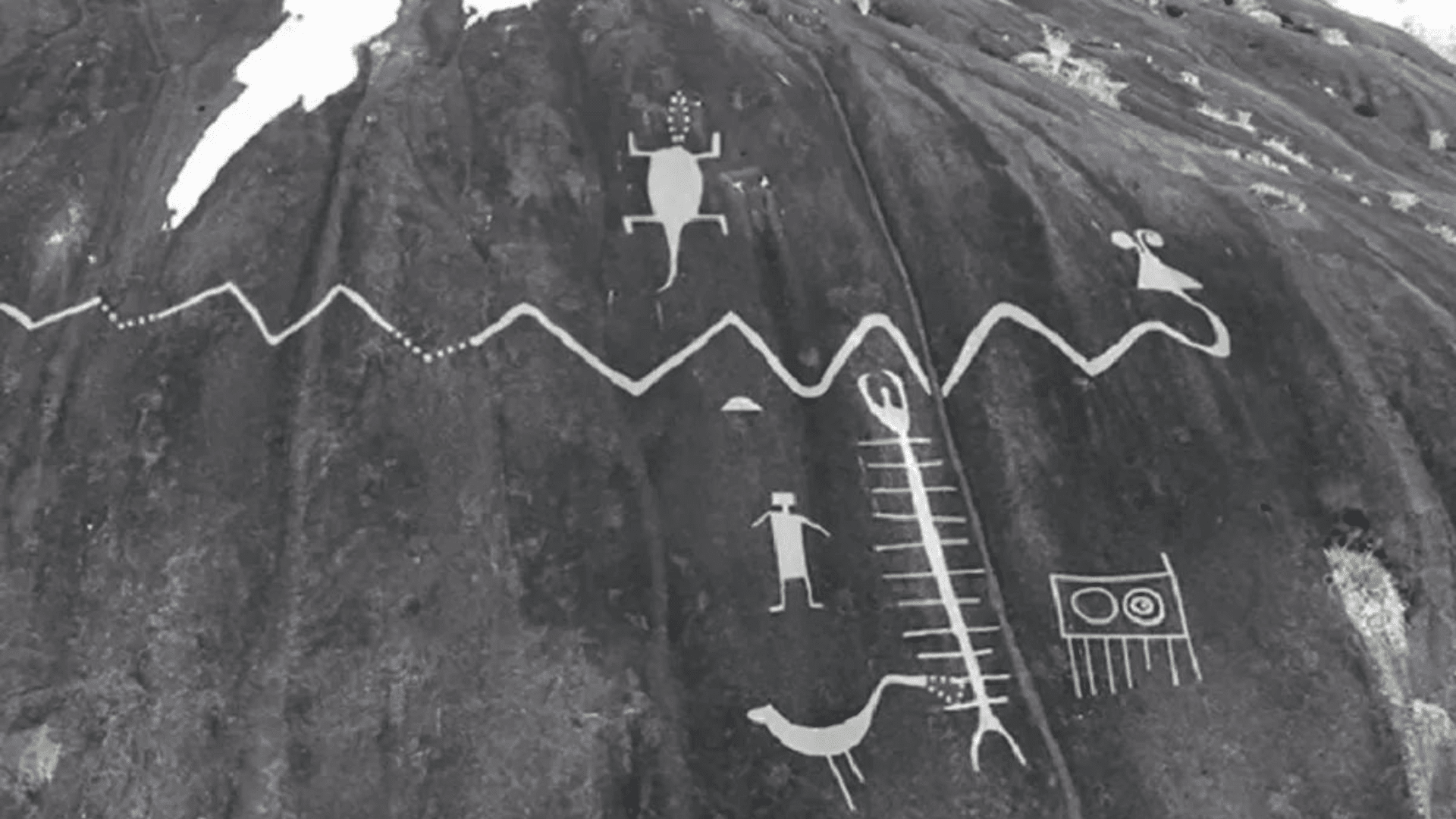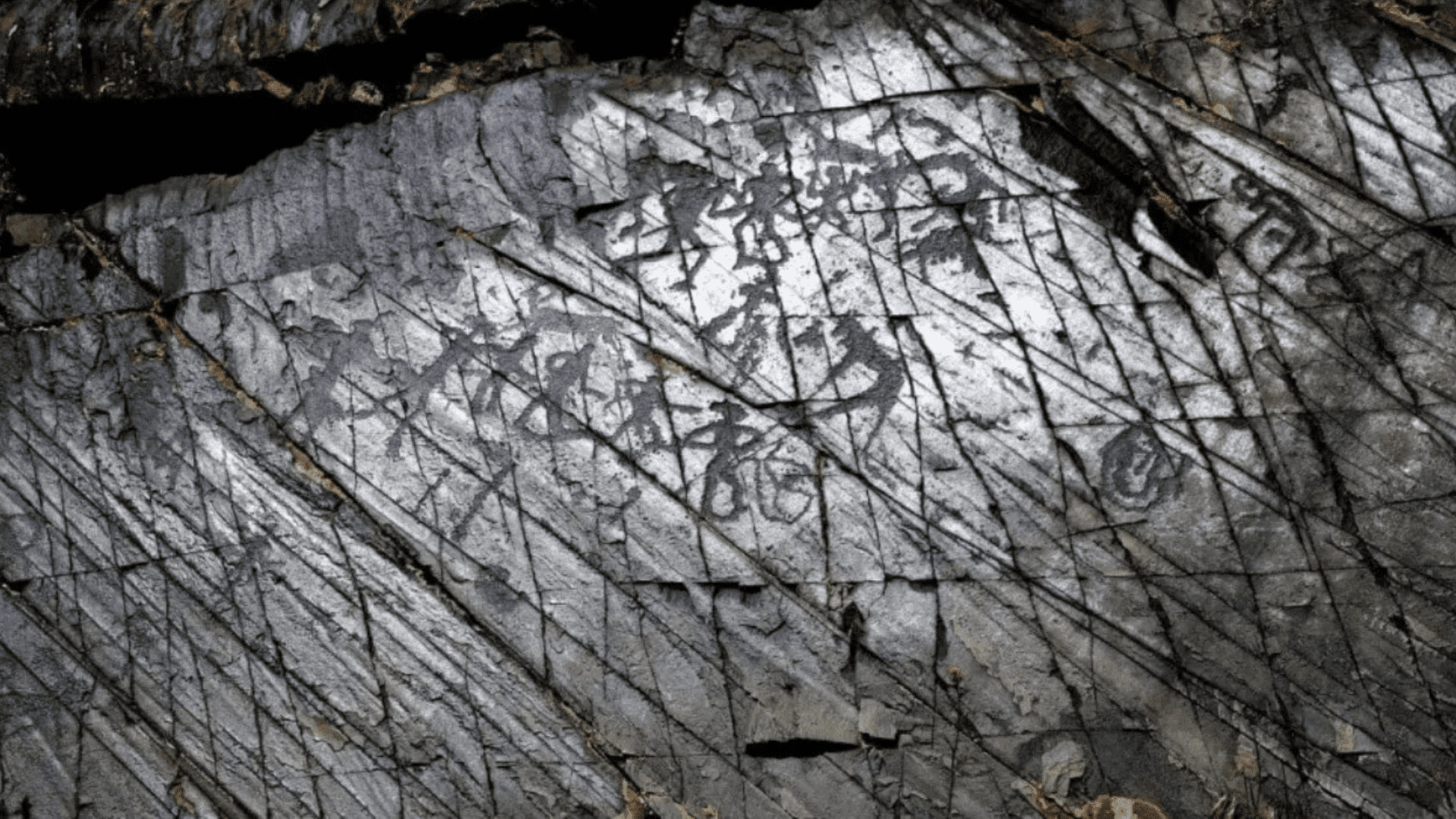Archaeologists have discovered the first known example of narrative or rock art that tells a story.

Located among the rock walls in the lowland karst landscape of South Sulawesi, the narrative artwork is one of many studied by researchers from Griffith University and several Indonesian organizations. The painting depicts three human-like figures interacting with a pig and is described as an “enigmatic scene” that may represent “a hunting narrative.”
“The artist took care to position these four separate figurative images in spatial proximity to each other and portrayed them interacting in a way that allows an observer to infer actions taking place among the figures. The result is a composed scene that communicates a story,” Adam Brumm, study author and professor of archaeology at Griffith University in Brisbane, told IFLScience. “These are sophisticated techniques that remain an important part of the extremely diverse artistic cultures and storytelling traditions found in all human societies today.”
Utilizing a novel dating technique, the research team concluded the pigment was applied to the cave wall at least 51,200 years ago. This is considered very old for narrative art, as story-telling compositions didn’t become commonplace until around 14,000 to 11,000 years ago.

The shift from more abstract art such as shapes and squiggles to narrative artwork featuring figures and stories represents how human societies and communities became more complex over time. In addition to being the oldest narrative scene reported to date, the new study purports that the piece is also the new record holder for the earliest known figurative cave art.
Interestingly, most of the very few examples of narrative rock art from this time period are located in Sulawesi. Researchers have speculated that rather than this being a location of rapid development, these paintings were lucky enough to be well-preserved and found.
“It’s probably a preservation bias: that is, humans were using similar forms of image-making elsewhere in the world at an equivalent period of time and indeed earlier, but the evidence either hasn’t survived or is it as yet undiscovered,” Professor Brumm explained.







